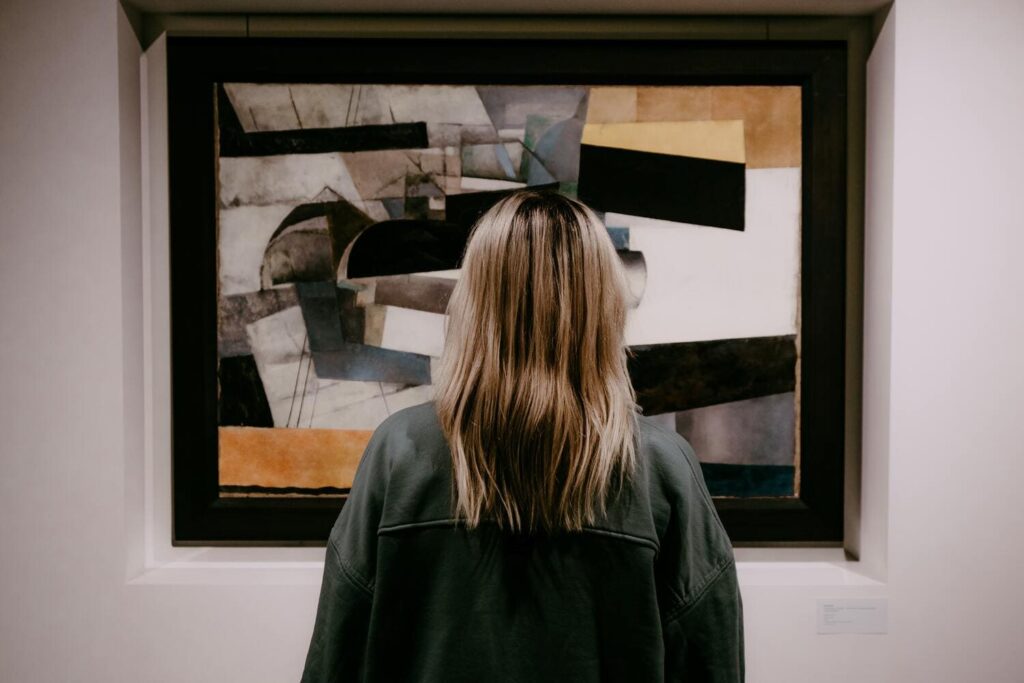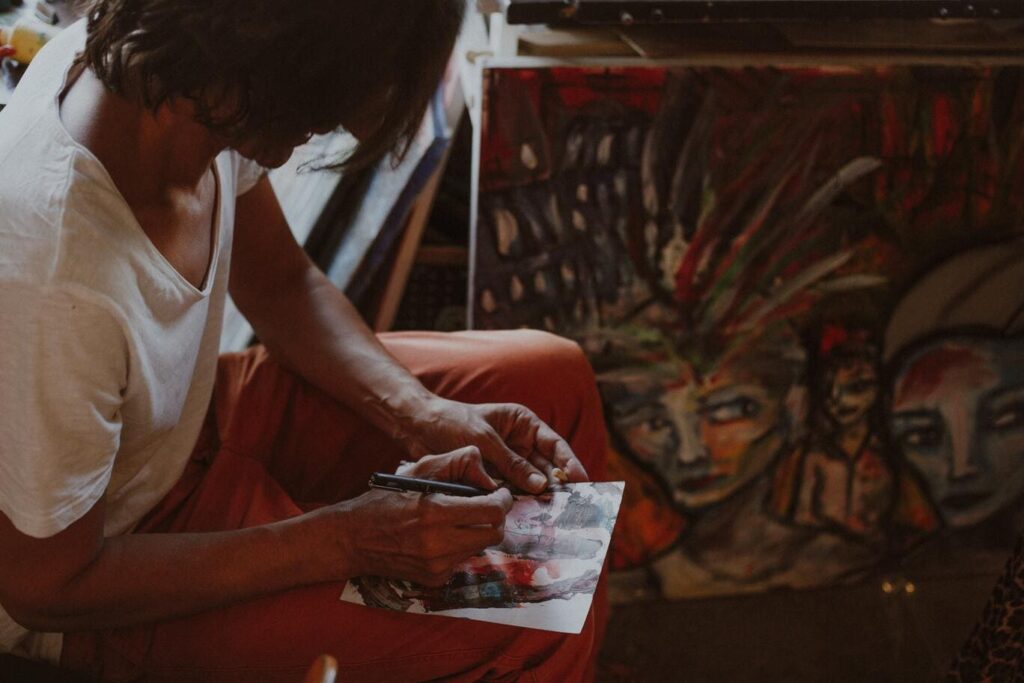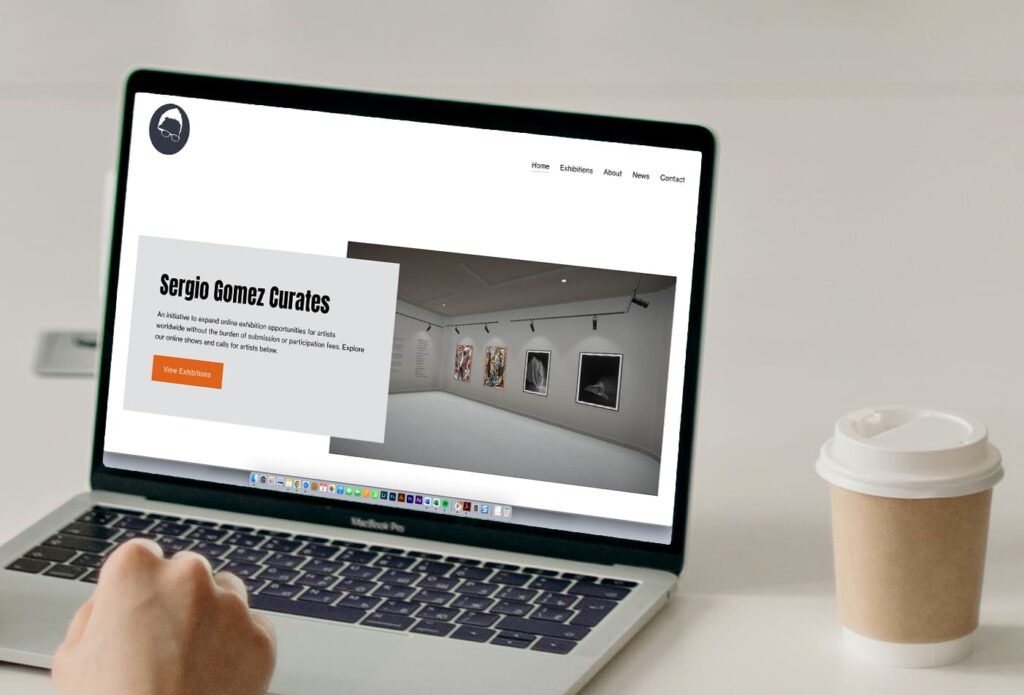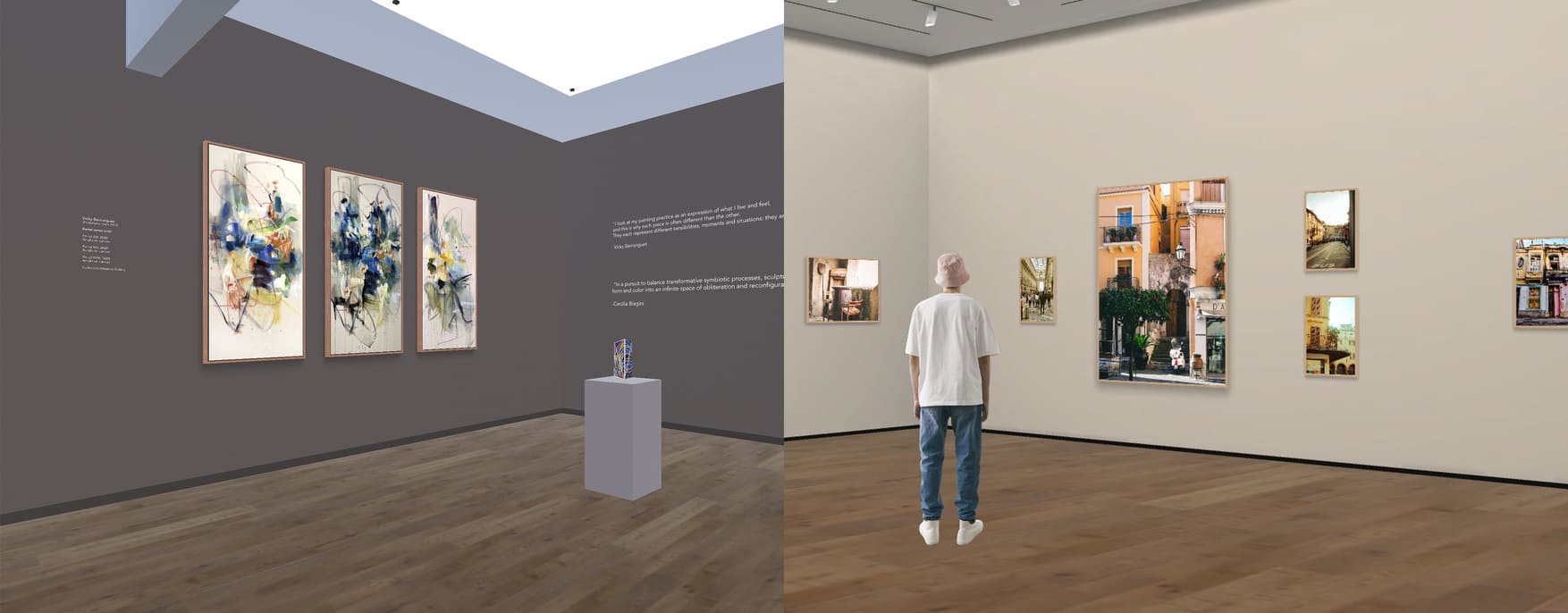When the word Marketing pops up in a conversation between artists, it tends to spark debate. It comes with the realization that there is a need for a strategy to better communicate one’s work, but also, comes with the fear of being too “salesy” or stripping their work of a deeper meaning in order to make a sale.
And it is understandable: we fear what we don’t know. Marketing is commonly foreign to a majority of artists, but that doesn’t mean they should stay in the dark. Familiarizing themselves with these concepts and strategies can help artists define their message and enrich how they communicate it to achieve their creative goals.
Behind every artwork, there is a desire to share it with the world, and that’s where marketing comes in Keep reading to learn basic concepts and terms every artist should know.

Contents
Art marketing: getting familiar with the term
Let’s start from the base: Marketing, as a general term, is a mix of actions or “pushes” that drive a customer to perform a desired action. This can range from interacting with the brand to actually acquiring its products or services.
How can we apply this term that seems to be so related to transactions than to a person interacting with a piece of art that captures their attention? Let’s break it down and apply it to the art world to create a friendlier concept: Art Marketing.
Your body of work as an artist is the message you want to communicate. Showcasing your artworks in a physical or digital space is already a “push”. It is a first interaction that can capture the attention of the people that will later become your audience.
The desired action they might take can range from simply feeling identified with your work, making an echo of it, visiting your show, getting your exhibition proposal approved, acquiring a piece, or making a commission.
Art Marketing can be understood as a strategy or a series of actions, an artist crafts to generate interactions with their audience. The objective is communicating their message and getting people to take actions that will help them achieve their creative and business goals.
Target Audience: know your art lover
When we talk about an audience we usually think of spectators, but from an art marketing perspective, the audience is not mere listeners or viewers, these people play an active role and define not only how we communicate our message but when and where.
Your audience is shaped by people who are interested in your work, those who support it, those who feel a connection with what you do, and even those who have similar interests, like the same type of subjects or medium you work with. The whole world is not your audience, it is a particular segment of individuals or niche, and defining who they are, where they are, and how to reach them is key.
You can easily divide your audience into two major groups: those you have already identified and engaged with, and those who could potentially join the group. These are a few questions you can ask yourself in order to draft a first sketch of your target audience or the people you want to engage with:
-Who usually expresses interest in your work?
-What do these people have in common?
-What are the major subjects in your body of work?
-Where do people with those common interests gather?
By knowing who your audience is, and what their interests and preferences are, you can communicate and showcase your work in a way that will resonate with them and capture their attention.

Branding: the embodiment of your message
“Everyone is a brand now”, have you ever heard this phrase? With the rise of social media and the opportunity they give to each person to create their own channel of communication and expression, there is a truth behind that phrase. But a Brand is so much more.
A Brand is not only a username, a logo, or even a staple product. It’s a mix of tangible and intangible elements. Yes, the naming is part of the brand, the visual identity is also a big pillar, but so is the vision, the purpose, the message, and even the tone used to spread their message to the public.
Branding is the process and the strategy of coming up with that recognizable identity and making sure it is present in every single thing that you do to convey a cohesive message.
As an artist, your brand is not only your name and signature, it involves the characteristics of your work, general themes, materials, tools, subject matter and statement. It also refers to what people recognize and remember about your work, that lingering feeling that your pieces awaken in whoever interacts with them.
For artists, branding is not about reinventing the wheel. It’s more about recognizing each of these elements and how they are portrayed in every space they inhabit.
Where is your “brand” as an artist present?
-On your professional artist’s website
-Your social media profiles and what you post on them
-The visual aids you use to present your work, like digital room mockups
–Newsletters, emails, and other communications
-The way you describe your artworks
-Your proposals documents
-Your CV or resume
-Your curatorial views and statements
-Your exhibitions, both in situ and virtual
-Even the way you market or make your pieces available to potential collectors
And yes, in case you are wondering your brand evolves with you as you make your journey as an artist.

Storytelling: there is a story behind every piece
Storytelling is a shared concept for both the art and the marketing world. It is an art form by itself but also a technique used to communicate a message with elements we recognize from literature and narrative.
Storytelling is in fact, telling a story. In the case of an artist crafting a marketing strategy to promote their work, the story is who they are, what they do, and how they do it. The way you craft that message can help you convey your purpose and intentions in a more effective way.
Think about this: when you select a series of pieces in the curatorial process previous to an exhibition, you are actually creating a story. Each piece tells a chapter that can stand by itself, but the whole collection and how it is presented is a full narrative that helps you create an emotional connection with your audience that is memorable.
And storytelling is present in everything that you do, even when sharing an update on social media about your latest work or your current creative process, that’s a story that people engage with.
Unique selling proposition: what makes you unique?
Have you ever sat down and written what makes you stand out from other artists? This simple exercise is actually a great way to identify the elements that make you and your work unique. Knowing who you are and what you do gives you the clarity you need to reach out to others and present your creations.
In the marketing world, the Unique Selling Proposition is a concept that frames what makes a product, brand, or service unique. There can be a thousand more doing similar things, but each brand has its own peculiarities and characteristics that make it one-of-a-kind.
As a person, as a creative, there is no one like you. That’s your Unique Selling Proposition, and this argument is solid because even if another artist has a similar style, technique, or subject matter, your creative input is only yours, and is the result of your upbringing, your experiences, your views, objectives, and purpose.
By knowing your USP you can market yourself to the art world.

Visual Identity: what are the recognizable elements in your work?
Intertwined in your body of work there is a set of visual elements that are easily recognizable by the public. It might be your color palette, your line work, the way you work with the balance of light and shadow, the possibilities are endless. But those elements are a valuable resource in your art marketing strategy.
These are visual aids that can help you frame all types of content inside your world and open a window for others to step into it. Look at the example above, artist and curator Sergio Gomez uses a view from an online art show he has curated as part of his website landing page.
This a great first impression for visitors. At first glance, they can get a view of the artist’s style and aesthetic, something that can spark their curiosity and lead them to learn more about his work.
Social Proof: building an online presence as an artist
The lines between the digital and the physical world blur more and more with the passage of time. As an artist, building an online presence is essential. This is not about “likes” and “follows”, it is about creating a space where you can share your creations and your process with the world, giving you an exclusive opportunity to interact directly with people that share the same interests.
Social proof goes beyond having a website or an active social media profile. It is the full sum of your online presence: the community you build around your work, the opportunities you create to engage with them, how you showcase your work, what experience you offer for those who want to acquire one of your pieces, even mentions and profiles made on digital publications and channels about you and your body of work.
This is something that is built in time. Each little action gives you a new opportunity to understand your audience and the best way to share your work with them and give them a reason to come back.
Now that you know these basic art marketing concepts, how are you going to apply them to achieve your goals?



